Still not overcrowded by aggressive mass tourism, Basilicata is a destination that embraces an all-round travel concept.
The coast is an inlaid carpet of beaches, bays and small rocky coves lapped by the two seas that bathe the region, the Tyrrhenian and the Ionian.
The hinterland is dominated by Italy's largest national park sited on the Calabrian border. Wooded slopes of pines, maples and beeches (the oldest in Europe) stretch down to the bare peaks of the Pollino massif designing a truly wild and sovereign nature.
And then, folklore. Lucania is an ancient land, still closely anchored to its deepest roots, to which the population - less than 600,000 inhabitants - is viscerally attached.
We have been there. And this is the story of our road trip in Basilicata.
A road trip in Basilicata, Italy

As we set off for our road trip in Basilicata from neighbouring Calabria, vast valleys and green hills flow quickly and colourfully out of our car windows.
We are still far from the region's trademark barren, lunar landscapes and incredible views that make this part of Italy seem out of the world.
Indeed, much of Basilicata can be described as "out of the world" and extraordinary, from the badlands moulded into clay to the deep incisions of the ravines near Matera, from the high, animal-shaped spurs to the villages sprouting from rock like a natural granitic extension.
Being amazed in Basilicata is a prevalent emotion while exploring such a mysterious and fascinating environment.
Lucanians, Greeks, Romans, Lombards, Byzantines, Saracens and Normans dominated here for centuries. In recent years, it has been experiencing a happy rediscovery due to the renewed popularity of Matera. This majestic city served as the film set for Mel Gibson's blockbuster, The Passion, and was also declared the European Capital of Culture in 2019.
It is precisely Matera that comes to mind when talking about this region. We decide to save the iconic city of Basilica for our last stop. First, we head for two of the most beautiful villages in Italy.
A road trip in Basilicata: Castelmezzano
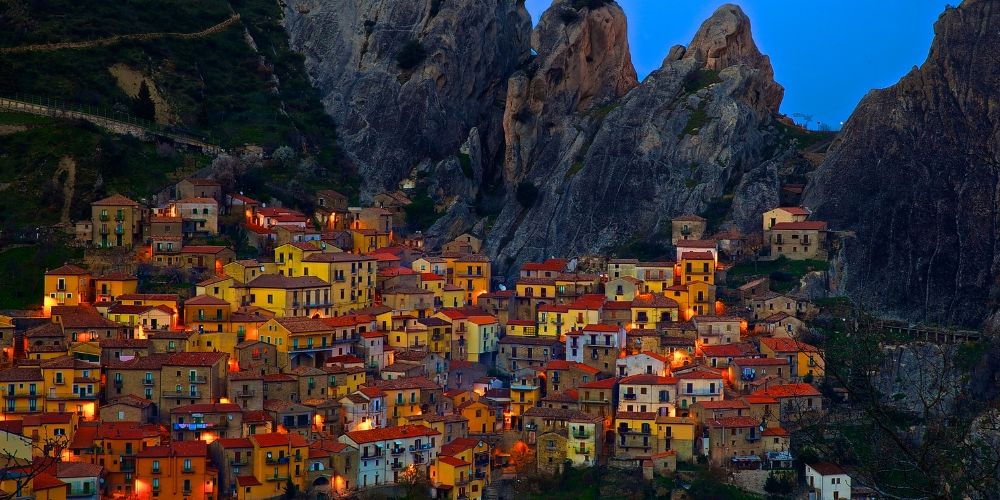
Curve after curve, among flocks of sheep, isolated farmsteads and cattle crossing signs, we approach the magnificent spectacle of the Lucanian Dolomites. That little presepe we see perched just below the rocky spires is our destination. We are in Castelmezzano, a panoramic medieval village that will make you dizzy, both because of its height and beauty.
As soon as we arrive at the B&B, Pasquale, the friendly owner, greets us with a warm welcome. He recommends the strenuous and suggestive trek from Castelmezzano to neighbouring Pietrapertosa and promises a hearty breakfast for the next morning. 'My wife prepares everything', he says with a smile.
We quickly store our bags and walk towards the old town centre: lots of stairs and steep climbs, narrow streets and cobbled lanes (behind which other stairs hide) and magnificent views over sheer cliffs. See the ruins of the Norman castle, the Coiro, Parrella, Merlino, Paternò and Campagna palaces and the Palazzo Ducale.
We nibble on some traditional peperoni cruschi in a crunchy street food version and eat a panino stuffed with tasty local salami in the central Piazza Caiazzo, a magnificent terrace overlooking the Dolomites where the majestic Santa Maria dell'Olmo stands out. Dating back to the 13th century, the church contains a wooden statue of the Madonna and Child, a Baroque altar and a Holy Family by Girolamo Bresciano.
Poetic treks in the woods
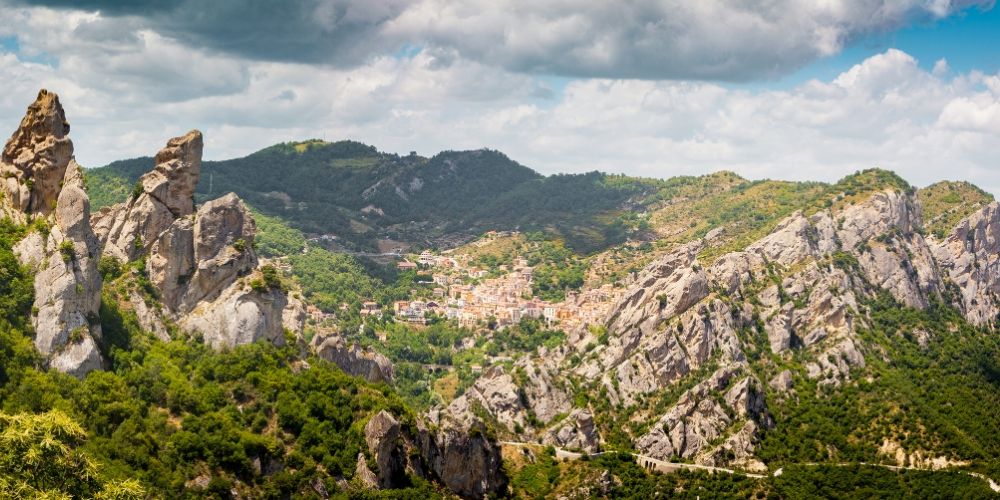
Re-energized from our lunch, we follow our host's advice and head to the Percorso delle sette pietre (Seven Stones Trail). The trek is a unique cultural experience featuring scenic installations and sound effects based on the story 'Vito Ballava con le Streghe' by Mimmo Sammartino. If, as in our case, the weather is a little gloomy and only a few hikers venture on the trail, the thrill is guaranteed.
The trek may pose a challenge due to the significant elevation changes, but it is still achievable without requiring any special equipment. Along the way, you'll notice the signs for the Ponte Nepalese (Nepalese Bridge), a suspension bridge at 650 metres that links the Salem and Marcirosa climbing routes.
If you are a fan of the genre, you should definitely check out Castelsaraceno in Basilicata, home to the longest Tibetan bridge in the world. This incredible 590-metre walkway suspended in the air is not for the faint of heart, but it's sure to provide an unforgettable experience for daring spirits.
A road trip in Basilicata: Pietrapertosa
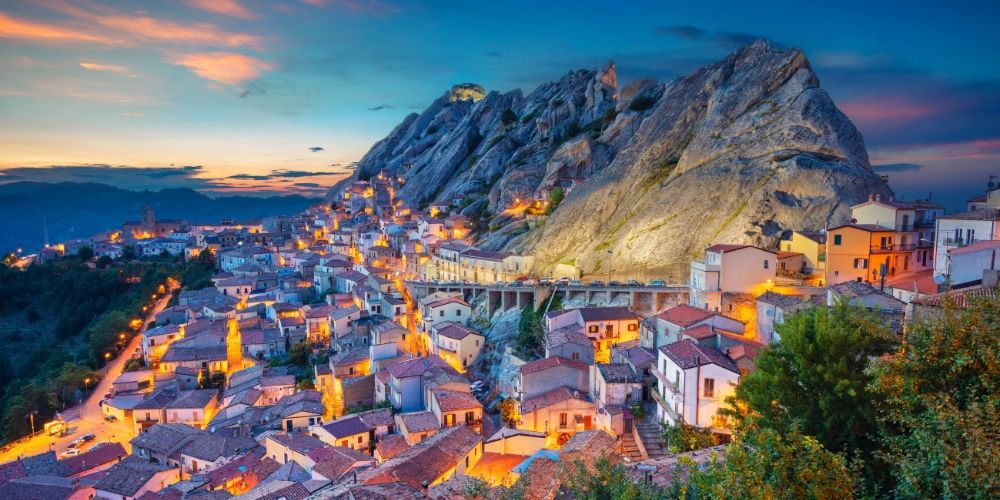
We arrive in Pietrapertosa at the end of a rather tricky climb. We are right next to the jagged peaks of the Dolomites. Looking up, we can see a section of the via ferrata (Italian for iron way, a protected climbing route). A few minutes to recharge, and we are ready to wander through the borgo, the highest municipality in Basilicata.
The beautiful Saracen village has a historic centre that blends in perfectly with the mountain. It's an arena of low houses, stately homes, refined stone portals and rupestrian churches. Visit the Chiesa di San Giacomo Maggiore, a treasure trove of Lucanian works of art ranging from the 15th to the 18th century.
As we reach Arabata, a very narrow (and very high) Arab district, we are amazed to see small houses built so close to each other on the rocky terrain. It's a breathtaking sight to see these small dwellings leaning against the bare rock with such precision. We are now very close to the Norman fortress. Before going up the (umpteenth) climb that will take us to admire what remains of the old castle, we notice a lively bustle of people, helmets on their heads and smiles of tense euphoria on their faces. They are the daredevils who have decided to fly.
Where Eagles Dare
In Pietrapertosa, you can enjoy the thrill of crossing the 1550 metres to Castelmezzano by gliding at 120 km/hr in Superman position along a steel cable. It's called Volo dell'angelo (Angel Flight), but going that fast at 400 metres high, you'll feel like Clark Kent: adrenalin guaranteed.
We continue a few more metres and reach the highest point, tired but satisfied: the sweeping view from the perimeter walls of the Norman-Swabian castle is indescribable.
On our way back, we retraced the Percorso delle Sette Pietre, but we ended up getting lost despite the trail being waymarked. So, it's essential to watch out for the signs along the way; otherwise, you might find yourself walking in the streambed, just like us.
A taste of the rich local cuisine is a must at dinner: Podolica meat and cheese, Arraganate potatoes and the inevitable Peperoni cruschi. As we return to our B&B, we can't help looking upwards: the starry sky of Castelmezzano is the perfect ending to a day that had us exclaim a lot of "wow".
Walking in a ghost town

Before we make our way to Craco, the next stop on our road trip itinerary, we can't resist indulging in the sumptuous breakfast that Pasquale had promised us. However, our slight delay means that we arrive a bit later than planned to our destination - a ghost town frozen in time.
Craco was abandoned in 1963 after a landslide, and its inhabitants moved a few kilometres away in the new Craco Peschiera. Today, donkeys and a few sheep are the only ones wandering around peacefully beyond the fences. It is not possible to enter the hamlet independently for safety reasons, but you can still visit the town on a guided tour.
A setting for numerous films, many tourists come here every year, attracted by the surreal and somewhat sinister atmosphere of this unmissable village surrounded by steep ravines.
The road we take is a succession of hairpin bends winding through thick green vegetation that will gradually turn into a Far West landscape: red ground and ochre grasslands where waves of clay emerge.
Before evacuation, Craco was a flourishing borgo, a strategic military centre and a university seat. In the 15th century, many buildings rose beneath its 20-metre-high Norman tower that still unmistakably outlines the cityscape. The place is also a World Monuments Fund site.
Walking past a fig tree, we notice a lazy donkey watching us. We give it a gentle stroke and continue towards our car. Puglia is our next destination, but that's a story for another time. However, we plan to return to Basilicata in a few days to explore the region's superstar.
A road trip in Basilicata: stop in Matera
A sudden storm surprises us just before we arrive in Matera. The rain doesn't stop falling even when we park near an inviting norcineria (a kind of delicatessen). We take the opportunity to nibble on local salami and try some caciocavallo podolico, one of the best-known Basilicata products.
Suddenly, we are delighted by the sight of a street vendor sprouting up out of nowhere and equipped with our new (and super expensive) umbrellas we are finally ready to begin the exploration.
The walk to the old districts is lined with boutique hotels, trendy bars and ultra-modern spots that blend in perfectly with the urban design and architecture of the buildings. In between, there are panoramic terraces where you can shoot a lot of Instagram-perfect photos. From one of those, the wide Belvedere Guerricchio, we look out over the Sassi for the first time.
The exhibition of rock, roofs, and nature leaves us speechless. It's strange to think that this UNESCO World Heritage site was once described as 'the shame of Italy'. Casa Grotta, a cave house in Vico Solitario, recreates the harsh rural life of yesteryear.
Matera needs (and deserves) more than one day, but we don't have much time and spend pretty much of it entering every church and historic building we come across while wandering among rocky outcrops, steep steps and stone alleyways. You should be smarter and study a plan of attack in advance.
Get tickets for Matera walking tourIn the city of stone
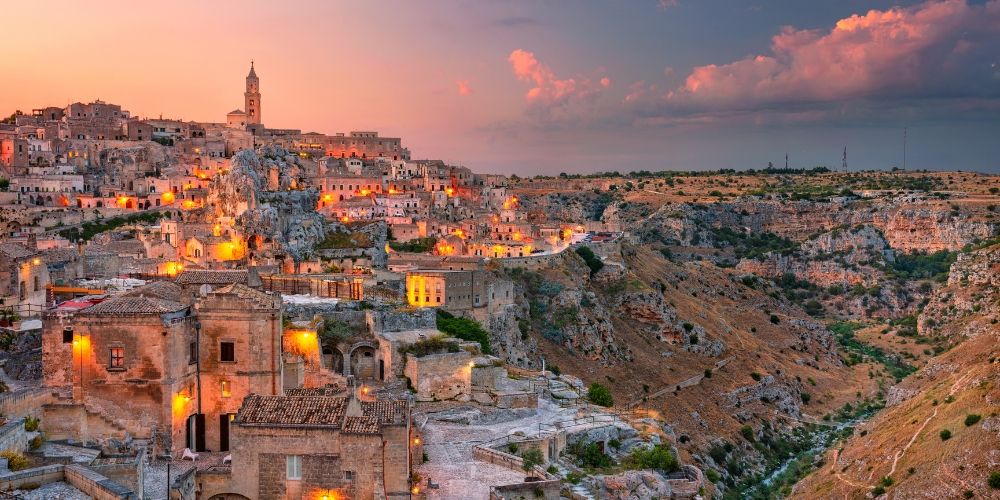
A good starting point for a tour of the impressive Sasso Caveoso is Casa Noha, which shows multimedia presentations of the city's history. From here, you can continue to Piazza San Pietro Caveoso and its namesake church; also, linger in the large square: this is a unique vantage point over the Murgia Park.
Other recommended stops include the rupestrian churches of the Madonna dell'Idris and San Giovanni in Monterrone, both carved out of tuff, and the 16th-century Palazzo Pomarici, featuring a collection of works by Picasso and De Chirico.
Sasso Barisano requires stops at the Church of San Pietro, the most prominent rock sacred structure in Matera, the Convent of Sant'Agostino, the Church of San Giovanni Battista and the Crypt of San Giuliano.
Then, don't miss the Civita, the high district between the two Sassi. You have to reach this rione to find the Gothic cathedral of the Madonna della Bruna. Visiting Matera requires some effort (and physical exercise), but few other places in the world retain the same mystical atmosphere of authentic antiquity. We leave aware of having seen only a tiny part of the "painful beauty" — as Carlo Levi wrote — of this timeless, almost biblical city.
Get tickets for Casa NohaAbout the author
Written on 20/09/2021


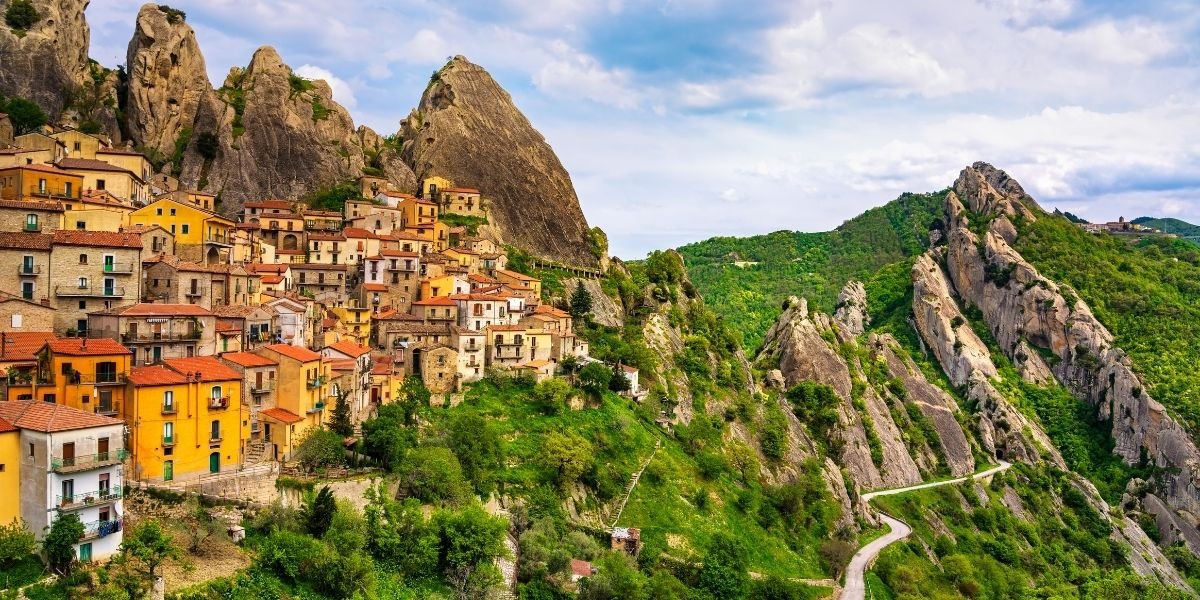
Lorena Calise
Our road trip in Basilicata among spatial landscapes, millenary cities and haunting ghost towns.